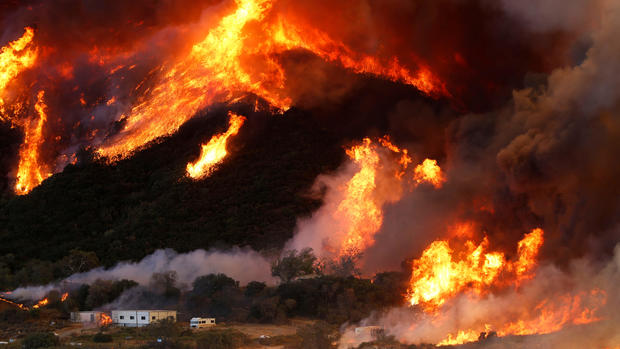Inside the search for a better way to fight wildfires
MISSOULA, Montana -- Hundreds of square miles in California have been overcome by wildfires this summer, in part fueled by a prolonged drought.
And while firefighters in Southern California work around the clock to control the flames, scientists hundreds of miles away are waging a different sort of battle - the one to fully understand how these blazes spread.
“There is an expression that everyone uses here in the U.S., ‘spreads like wildfire,’ yet we don’t even know how wildfires spread,” said Mark Finney, a scientist with the U.S. Forest Service.
The U.S. Forest Service’s Fire Lab in Missoula, Montana, houses a burn chamber to designed specifically to answer that question.
Researchers are dissecting a wildfire by measuring how fast pine needles burn and how a fire can propel itself, even without wind.
The Forest Service spent an unprecedented $1.7 billion fighting fires that burned a record of 10.1 million acres in 2015. But Finney’s research shows that putting out every fire may not be working.
“By fighting these fires, we unfortunately enter what’s called the fire paradox, and that is the harder you try to suppress them, the worse they get when they do happen,” Finney said.
Under normal conditions, wildfires will thin out forests. But by constantly putting the fires out, more unburned brush is left to fuel the next one.
Finney said that firefighters should be intentionally setting more so-called prescribed fires to burn off excess vegetation, or simply let some natural fires burn longer.
In a statement to CBS News, the U.S. Forest Service said it “agrees that managed and prescribed fires are important tools,” but “our capacity to complete this work is restricted by the budget” allocated by Congress.
The agency also said there are liability issues with state and local governments, as more developers are pushing to build homes closer to fire-prone areas.
“Fire is inevitable. If we convince ourselves that it’s not, then we essentially have a repeat every year of the same situation,” Finney said.
For now, scientists hope that setting controlled fires in the lab will help them better understand how to manage them in the forest.
